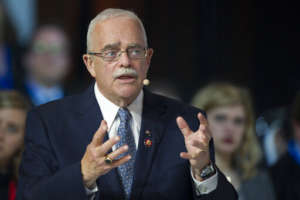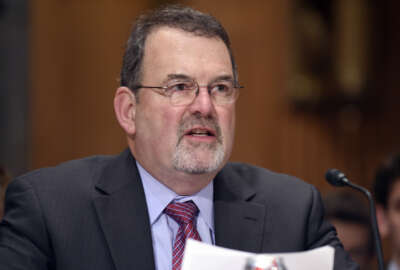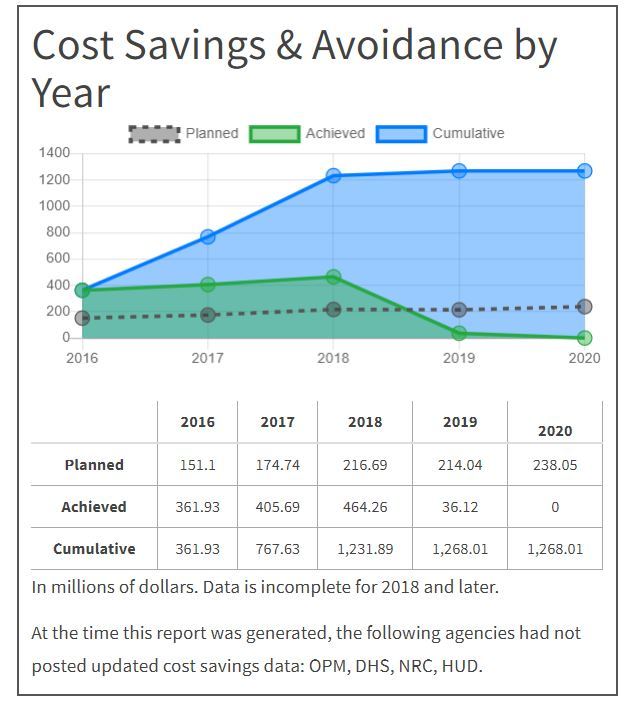
OMB finalizes data center policy, fueling FITARA hearing
The House Oversight and Reform Committee will release the 8th Federal IT Acquisition Reform Act (FITARA) scorecard showing five agencies improving, five falling and...
Best listening experience is on Chrome, Firefox or Safari. Subscribe to Federal Drive’s daily audio interviews on Apple Podcasts or PodcastOne.
The House Oversight and Reform Committee will release its eighth Federal IT Acquisition Reform Act (FITARA) scorecard later Wednesday and it will show steady progress across most agencies.
Federal News Network has learned the scorecard will show 14 agencies earned the same grades as they did in the previous scorecard from December. Five agencies improved their grades, while five agencies, including NASA and the Department of Health and Human Services, received downgrades.

Rep. Gerry Connolly (D-Va.), chairman of the subcommittee on government operations, said the latest grades show a lot of the progress over the last four years under FITARA has been sustained. Connolly’s subcommittee will hold a hearing with Suzette Kent, the federal chief information officer, the Government Accountability Office’s Carol Harris, and then a panel of agency CIOs from the departments of Agriculture, Education and Treasury.
“Agency CIO authority enhancements, 17 agencies are now at an ‘A or B’ and only four agencies got an ‘F’ in that category. That is real progress,” Connolly said in an interview with Federal News Network. “Eight agency CIOs do not report to the head or deputy head of the agency, which lowers their score by a full grade. For example, the Department of Labor and the U.S. Agency for International Development would have received an ‘A’ on the scorecard if they had made changes in their reporting, but they did not.”
The fact that eight agency CIOs still do not report to their agency secretary or deputy secretary will undoubtedly be a key focus area for the committee at the hearing. This is a decades-long challenge to ensure agency CIOs have that proverbial seat at the table.
Additionally, Connolly said the committee wants to know more about the Office of Management and Budget’s plans to further consolidate data centers.
“We want data center optimization. We want data center consolidation, but not in a mindless way. We are concerned that the administration’s guidance uses optimization rather than consolidation, which is what the law says, is of concern for us” he said. “We think it dilutes the overall goal and allows a lot of stovepipes and small scale, inefficient and cyber risk-susceptible data centers to continue.”
Related Stories

11,700 and counting … data centers back on the chopping block
“We are not convinced OMB, in changing the language, is in compliance with the law,” he said.
Data center policy is final
Connolly will get his chance to find out more about the administration’s new plans to consolidate and optimize data centers.
Suzette Kent, the federal CIO, signed out the final memo just in time for the hearing. OMB issued the draft data center strategy in November and received 65 comments.
“As previously required by the FDCCI, agencies shall continue to reduce application, system, and database inventories to essential enterprise levels by increasing the use of virtualization to enable pooling of storage, network and computer resources, and dynamic allocation on-demand,” Kent writes in the memo. “Thereafter, agencies shall evaluate options for the consolidation and closure of existing data centers, where practical, in alignment with the cloud smart strategy. The cloud smart strategy emphasizes the use of risk-based decision-making and service delivery as key considerations in evaluating cloud technologies.
Kent also released the final version of the cloud smart strategy on Monday—giving the committee plenty to talk about.
In the final version of the memo, OMB prioritized agency actions:
- Consolidation and Closure
- Optimization
- Virtualization
- Availability
- Energy Metering
- Server Utilization
“The amount of information gathered and processed by the federal government continues to increase, especially with the rise of the ‘Internet of Things,’ artificial intelligence (AI) mobile computing and digital service delivery. This has resulted in increasing agency compute needs to keep up with demand. Although vendor-provided services such as cloud technologies are potential solutions, they are not always more cost-effective alternatives to agency-hosted services,” the memo states. “As a result of work that has occurred over the past years there will be continuous improvements, but the federal government should not expect to see continued dramatic savings or large-scale closures from ongoing data center consolidation and optimization efforts as agency needs grow.”
Instead, OMB recommends agencies seek savings from the optimization side of the coin through modernization efforts that include implementing energy efficient hardware and using ENERGY STAR products for cooling and power.
This move to consolidation and optimization has been under the debate for some time.
Sparring over savings
The Government Accountability Office and OMB sparred over this issue since 2013 when the Obama administration moved toward optimization focused goals.
And in 2016, OMB issued a third memo on data center consolidation and optimization where it redefined what a data center is, pushed agencies toward shared services and finding a balance approach between savings and efficiencies.
Connolly said he believes OMB’s new policy doesn’t follow the same path as that 2016 memo.
“Tony agreed with our goal fully in setting metrics for consolidation. You have 400 and you have to set a goal of getting down to 200 by Oct. 1, or something like that,” he said. “What we have with this OMB is simply substituting the word optimization without setting metrics for a lot of data centers going away. That is quite substantially different than where Tony Scott was.”
But Kent said clearly in her memo that OMB will continue to work with agencies to “set agency-specific goals for data center closures and cost savings that are appropriate to the mission and budget of each agency.”
For 2018, OMB reported agencies saved or avoided spending more than $464 million and saved more than $1.2 billion since 2016. It’s well short of OMB’s goal of $2.7 billion, which may be why Connolly is frustrated.

Despite the areas of frustration, including the need to update legislative authority for some agencies to implement working capital funds as allowed under the Modernizing Government Technology Act, Connolly said FITARA is making a difference across government.
“This bill is a tool for change. It is being used internally by CIOs and managers to effectuate change. That is encouraging to me,” he said. “If you look at the scorecards, we are trying to make sure people get full credit for what they have accomplished or done, but we also are trying to capture those areas where people are frankly lagging behind or not getting the job done and to try to prod them or incentivize them to do more. That is the purpose of the scorecard, not to blast a scarlet red letter on their backs. CIOs and other change agents are using the scorecards to prod change.”
Copyright © 2024 Federal News Network. All rights reserved. This website is not intended for users located within the European Economic Area.
Jason Miller is executive editor of Federal News Network and directs news coverage on the people, policy and programs of the federal government.
Follow @jmillerWFED





